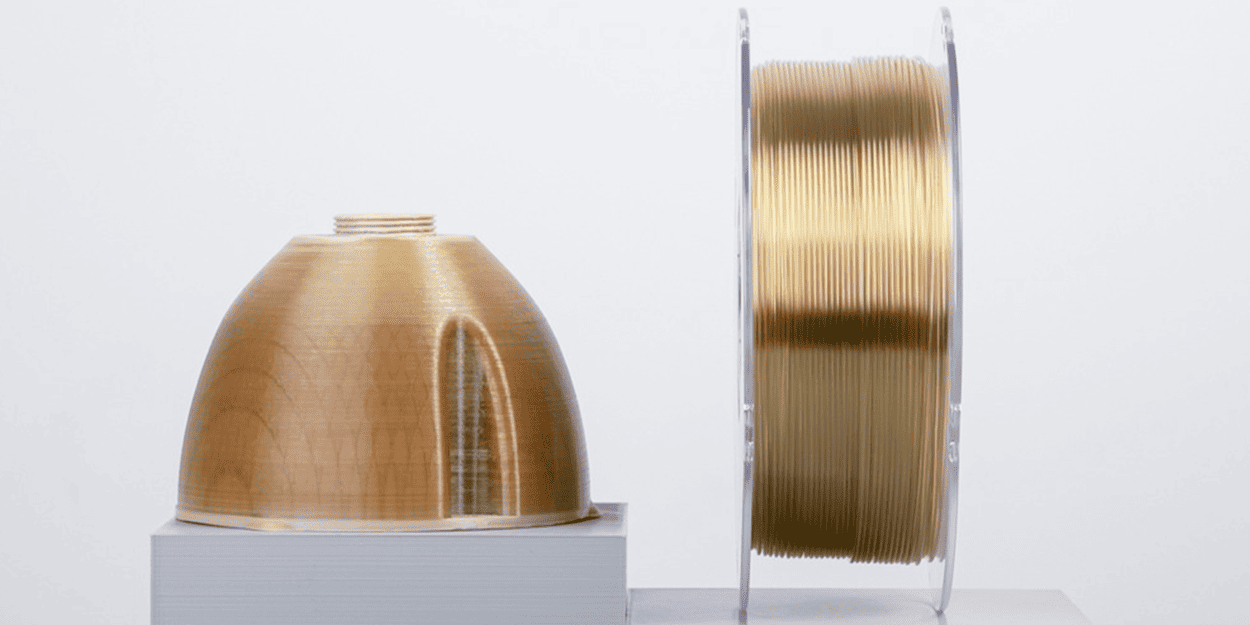Image Courtesy of Kexcelled3D
When your 3D printed parts need to perform—whether it’s a load-bearing bracket, a rugged tool, or a flexible, impact-resistant component—choosing the right filament can be the difference between success and failure.
Define “Strongest” for FDM Parts
“Strong” can mean different things depending on your application. In FDM 3D printing, strength is multi-dimensional. The strongest filament for one project may not be the best for another. Key strength factors include:
Tensile Strength — How much pulling force the material can handle before breaking.
Impact Resistance — Ability to absorb sudden shocks without cracking.
Flexural Strength — Resistance to bending forces.
Layer Adhesion — Strong interlayer bonding to prevent delamination.
Heat Resistance — Stability at elevated temperatures without warping or deforming.
Fatigue Resistance — Withstanding repeated stresses over time.
Some applications require maximum stiffness, others need toughness and flexibility. That’s why we’re looking at a mix of rigid engineering-grade filaments and one elastomer option for extreme durability.
Quick Comparison Cheat Sheet
|
Filament |
Key Strengths |
Print Difficulty |
Typical Applications |
|
Very high stiffness, excellent strength-to-weight ratio, minimal warping |
Medium–High (requires hardened nozzle) |
Drone frames, automotive jigs, structural prototypes |
|
|
Exceptional impact resistance, high tensile strength, heat resistance (~110 °C) |
High (needs enclosure, high temp) |
Safety equipment, load-bearing brackets, lighting fixtures |
|
|
Polyetherimide (Ultem / PEI) |
Outstanding strength and chemical resistance, high heat resistance (~170 °C) |
Very High (industrial printers) |
Aerospace, medical tools, high-performance prototypes |
|
Poly Ether Etherketone (PEEK) |
Top-tier mechanical strength, extreme chemical & temperature resistance (>250 °C) |
Extremely High (specialized industrial printers) |
Aerospace engine parts, oil & gas components |
|
High impact absorption, abrasion resistance, tear strength |
Medium (flexible filament handling required) |
Gaskets, phone cases, vibration-dampening mounts |
The 5 Strongest Filaments
1. Carbon Fiber Reinforced Filaments
Carbon fiber reinforced filaments are typically based on Nylon, PETG, or Polycarbonate, with short chopped carbon fibers added to boost stiffness and strength-to-weight ratio.
Strength profile:
Excellent rigidity without adding weight
Reduced warping and shrinkage compared to base polymers
Maintains dimensional accuracy under load
Printing considerations:
Abrasive to brass nozzles, use hardened steel or ruby nozzles
Requires tuned retraction settings to avoid clogging
Typical nozzle temps: 240–280 °C, bed: 60–90 °C
Best for: High-strength parts that must remain lightweight, like drone arms, structural brackets, or automotive fixtures.
2. Polycarbonate (PC)
Polycarbonate is known for its impact resistance and clarity. It’s a top choice when you need both toughness and high heat tolerance.
Strength profile:
Tensile strength: ~60–70 MPa
Heat deflection temperature: ~110 °C
Excellent impact resistance even at low temperatures
Printing considerations:
Requires nozzle temps of 260–300 °C and a heated bed (90–110 °C)
Benefits from an enclosed chamber to prevent cracking
Hygroscopic, must be dried before printing
Best for: Safety enclosures, high-impact tools, and load-bearing mechanical parts.
3. Polyetherimide (Ultem / PEI)
Ultem (a brand of Polyetherimide) is an aerospace-grade thermoplastic known for exceptional mechanical properties and flame retardancy.
Strength profile:
Tensile strength: ~95 MPa
Heat resistance up to 170 °C
Excellent chemical resistance
Printing considerations:
Requires industrial-grade FDM printers
Nozzle temps of 340–380 °C, bed ~140 °C
Often printed with soluble support materials for complex geometries
Best for: Aerospace, medical, and automotive components requiring high performance under extreme conditions.
4. Poly Ether Etherketone (PEEK)
PEEK is one of the strongest thermoplastics available for FDM, with mechanical properties that rival metals in certain applications.
Strength profile:
Tensile strength: ~90–100 MPa
Continuous use temperatures above 250 °C
Resistant to nearly all solvents and chemicals
Printing considerations:
Requires specialized, high-temperature industrial printers
Nozzle temps of 360–400 °C, bed 120–160 °C, heated chamber 120 °C
Post-processing annealing recommended for optimal crystallinity
Best for: High-stress, high-temperature applications in aerospace, oil & gas, and industrial manufacturing.
5. TPU (Thermoplastic Polyurethane)
TPU is unique in this list—it’s not the stiffest, but it’s one of the toughest due to its ability to flex and absorb impacts without breaking.
Strength profile:
Shore hardness: typically 85A–98A
Excellent abrasion resistance and tear strength
Superior energy absorption in impact scenarios
Printing considerations:
Requires slow print speeds (~20–40 mm/s) to handle flexibility
Direct drive extruders preferred
Nozzle temps 210–240 °C, bed 20–60 °C
Best for: Vibration-dampening parts, wear-resistant components, seals, and protective cases.
Order FDM 3D Printing Service at Hi3DP
Printing with high-strength materials requires more than just the right filament, it demands the right equipment, expertise, and process control.
Four Steps to Get Started at Hi3DP:
Upload Your 3D File — STL, STEP, or OBJ formats supported.
Select Your Filament — choose from our catalog of engineering-grade materials.
Receive An Instant Quote — with lead times and shipping options.
Get Your Part Delivered — ready for immediate functional use.
Whether you need one prototype or a production run of functional components, Hi3DP can deliver parts that stand up to real-world demands.
Upload Your 3D Models Now for A Quote › ›
FAQs
Q: Which filament is strongest for FDM?
A: PEEK generally tops the chart for overall mechanical performance, but it requires specialized printers. For accessibility and performance, carbon fiber reinforced filaments and polycarbonate are excellent choices.
Q: Is TPU considered a strong filament?
A: Yes. TPU is extremely strong in terms of impact and tear resistance. It’s not rigid, but it’s highly durable in applications where flexibility is needed.
Q: Can I print Ultem or PEEK on a desktop 3D printer?
A: Not effectively. These materials require high-temperature extruders, heated chambers, and controlled cooling found in industrial-grade systems.
Q: Do carbon fiber filaments always outperform their base materials?
A: They generally improve stiffness and reduce warping, but may slightly reduce flexibility compared to pure base polymers.
Q: What’s the best choice for heat-resistant functional parts?
A: For extreme heat resistance, PEEK or Ultem is best. For more accessible printing, polycarbonate offers good heat tolerance (~110 °C).














